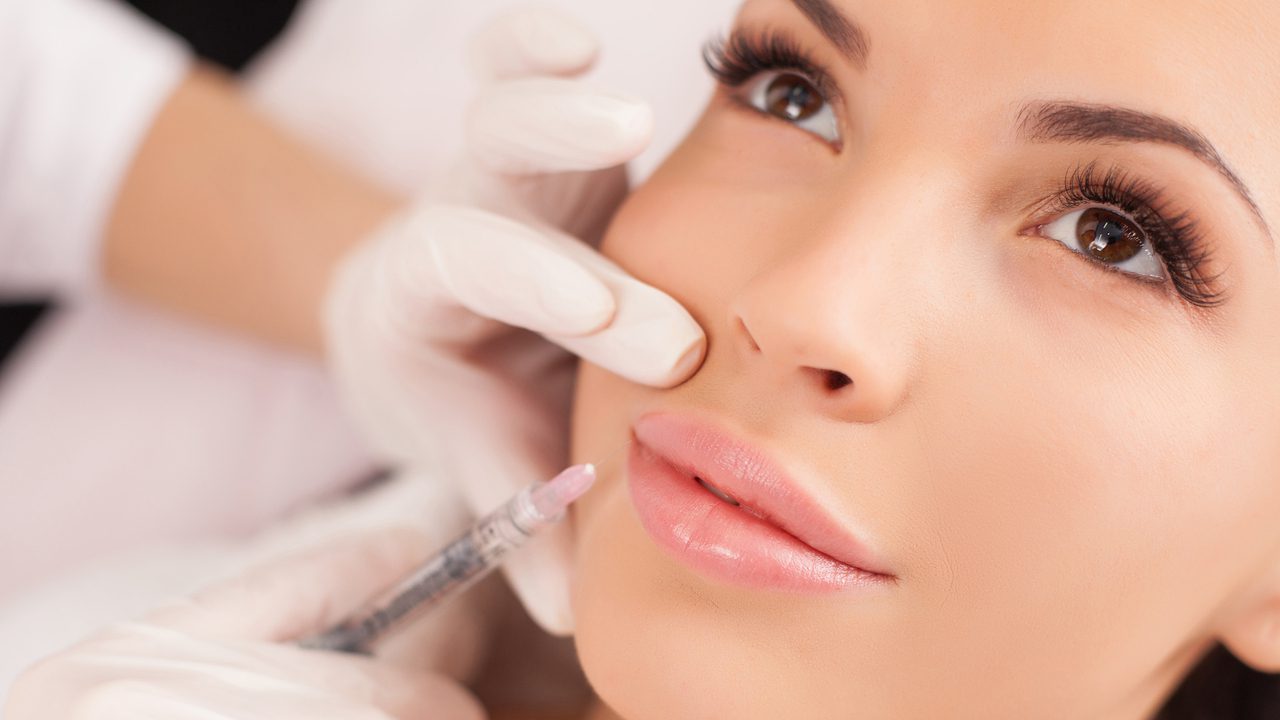Dermal Fillers: A Comprehensive Guide to Achieving Youthful, Radiant Skin
In the ever-evolving world of aesthetic medicine, dermal fillers have emerged as one of the most popular non-surgical treatments for facial rejuvenation. Whether it’s addressing fine lines, wrinkles, loss of volume, or enhancing specific facial features, dermal fillers offer a versatile and minimally invasive solution for individuals seeking youthful, radiant skin without the need for invasive surgery.
This article delves into the world of dermal fillers, exploring their benefits, types, procedures, safety, and what to expect. We’ll also take a look at why so many people are turning to dermal fillers as an essential part of their beauty regimen.
What Are Dermal Fillers?
Dermal fillers are injectable treatments designed to restore volume, smooth out wrinkles, and enhance facial contours. Composed of natural or synthetic materials, these fillers are used to mimic substances naturally found in the skin, such as hyaluronic acid (HA).
Over time, the skin loses elasticity, collagen production decreases, and fat distribution changes, leading to wrinkles, fine lines, and sagging. Dermal fillers can effectively combat these signs of aging by filling in wrinkles, adding volume to the face, and restoring lost contours.
The Benefits of Dermal Fillers
Dermal fillers are versatile and can be used to address a wide range of aesthetic concerns. Some of the key benefits include:
1. Wrinkle Reduction
Dermal fillers are highly effective at reducing the appearance of both fine lines and deep-set wrinkles. They smooth out the skin by filling in creases, giving the face a more youthful appearance.
2. Volume Restoration
As we age, the face naturally loses volume, especially in areas like the cheeks, under the eyes, and around the mouth. Dermal fillers help restore lost volume, giving the face a fuller, more youthful look.
3. Lip Enhancement
Dermal fillers can be used to enhance the shape and volume of the lips, offering a subtle or dramatic change depending on the individual’s preferences.
4. Facial Contouring
Fillers can enhance facial contours, such as the cheeks, chin, and jawline. This allows individuals to achieve a more sculpted and defined appearance.
5. Non-Surgical Solution
For those who are hesitant to undergo invasive surgical procedures, dermal fillers offer a non-surgical alternative with minimal downtime.
6. Natural-Looking Results
When administered by a skilled professional, dermal fillers provide natural-looking results that enhance one’s features without appearing overdone.
7. Immediate Results
Unlike some cosmetic treatments that require weeks or months to show effects, the results from dermal fillers are typically visible immediately after treatment.
Common Types of Dermal Fillers
There are several types of dermal fillers, each with its unique properties and uses. The most commonly used dermal fillers include:
1. Hyaluronic Acid (HA) Fillers
Hyaluronic acid is a substance naturally found in the skin, and it helps keep the skin hydrated and plump. HA fillers are widely used because of their natural composition and ability to produce immediate results. Popular HA fillers include:
- Juvederm
- Restylane
- Belotero
2. Calcium Hydroxylapatite Fillers
These fillers, such as Radiesse, are made from calcium particles suspended in a gel. They are used for deep wrinkles and folds, and they can also stimulate collagen production.
3. Poly-L-lactic Acid Fillers
Poly-L-lactic acid fillers, such as Sculptra, work by stimulating collagen production in the skin. They are typically used for facial volume restoration and can last up to two years.
4. Polymethylmethacrylate (PMMA) Fillers
PMMA fillers, like Bellafill, consist of tiny microspheres that provide structural support to the skin. These fillers are used for deeper wrinkles and folds and are considered semi-permanent.
5. Fat Transfer (Autologous Fat Injections)
In this procedure, fat is harvested from another part of the patient’s body (such as the abdomen or thighs) and injected into the face to restore volume. Fat transfer is a more permanent solution, though it is a more invasive procedure than standard fillers.
The Dermal Filler Procedure: What to Expect
Before receiving dermal fillers, it’s essential to have a consultation with a qualified and experienced practitioner who will assess your skin, discuss your concerns, and determine the most suitable filler for your needs. Here’s an overview of what the procedure entails:
1. Consultation and Assessment
Your provider will examine your face and discuss your desired results. They will also go over your medical history to ensure there are no contraindications to receiving dermal fillers.
2. Marking and Preparation
Once a treatment plan is established, your provider will mark the areas of your face where the fillers will be injected. The skin may be cleansed, and a topical numbing cream or local anesthesia may be applied to minimize discomfort.
3. Injection
Using a fine needle, the provider will carefully inject the filler into the targeted areas. The entire process typically takes 15 to 30 minutes, depending on the number of areas being treated.
4. Post-Procedure Care
After the injections, you may experience mild swelling, redness, or bruising, but these side effects usually subside within a few days. You can resume most activities immediately, although it’s recommended to avoid strenuous exercise, alcohol, and sun exposure for at least 24 hours.
How Long Do Dermal Fillers Last?
The longevity of dermal fillers varies depending on the type of filler used, the area treated, and the individual’s skin. In general, most fillers last between 6 months to 2 years. Hyaluronic acid fillers tend to last 6 to 18 months, while collagen-stimulating fillers like Sculptra can last up to 2 years.
Fat transfer injections can last several years, as the fat cells become integrated into the existing tissue. However, results are not permanent, as the natural aging process continues.
Are Dermal Fillers Safe?
Dermal fillers are generally considered safe when administered by a qualified and experienced medical professional. However, as with any cosmetic procedure, there are potential risks and side effects. These may include:
- Bruising and swelling at the injection site
- Redness or tenderness in the treated area
- Infection
- Lumps or irregularities under the skin
- Allergic reactions (though rare)
- Vascular complications, such as unintentional injection into a blood vessel, which can lead to serious issues like tissue death or blindness (this is extremely rare)
To minimize risks, it’s crucial to choose a reputable provider with extensive experience in administering dermal fillers.
Dermal Fillers vs. Botox: What’s the Difference?
Many people confuse dermal fillers with Botox, but these two treatments are quite different. While both are injectable treatments, they serve different purposes:
- Dermal Fillers: As mentioned earlier, fillers add volume to the face and fill in wrinkles, while enhancing facial contours.
- Botox: Botox works by temporarily paralyzing the muscles responsible for wrinkles. It’s primarily used for dynamic wrinkles, such as frown lines, crow’s feet, and forehead lines.
Both treatments are highly effective for facial rejuvenation, and many people opt to combine them to address various signs of aging comprehensively.
Who is a Good Candidate for Dermal Fillers?
Dermal fillers are suitable for a wide range of individuals looking to enhance their appearance without surgery. You may be a good candidate if:
- You have wrinkles, fine lines, or deep folds you want to minimize.
- You’ve noticed volume loss in areas like the cheeks, under the eyes, or around the mouth.
- You’re looking to enhance your lips, cheeks, or chin.
- You prefer a non-surgical solution for facial rejuvenation.
- You’re in good overall health and have realistic expectations for the results.
During your consultation, your provider will determine whether dermal fillers are the right treatment for you based on your goals and medical history.
Combining Dermal Fillers with Other Treatments
Dermal fillers can be combined with other cosmetic treatments to achieve more comprehensive facial rejuvenation. Some popular combination treatments include:
- Botox: For treating dynamic wrinkles, such as forehead lines and crow’s feet.
- Chemical Peels: To improve skin texture, tone, and overall appearance.
- Microneedling: For collagen stimulation and enhanced skin rejuvenation.
- Laser Therapy: To address pigmentation issues, scars, or skin laxity.
These treatments can complement the effects of dermal fillers, providing more dramatic and long-lasting results.
SF Medaesthetics Conclusion: Achieving Timeless Beauty with Dermal Fillers
Dermal fillers have revolutionized the world of cosmetic treatments, offering individuals a safe, effective, and non-surgical way to restore youthfulness, enhance facial features, and achieve a more radiant appearance. Whether you’re looking to reduce wrinkles, restore volume, or sculpt your facial contours, dermal fillers offer a customizable solution that delivers natural-looking results with minimal downtime.
For the best results, it’s essential to choose a qualified and experienced provider who understands facial anatomy and can tailor the treatment to your unique needs. When done correctly, dermal fillers can help you achieve the timeless beauty you desire while maintaining a natural and refreshed look.














Post Comment